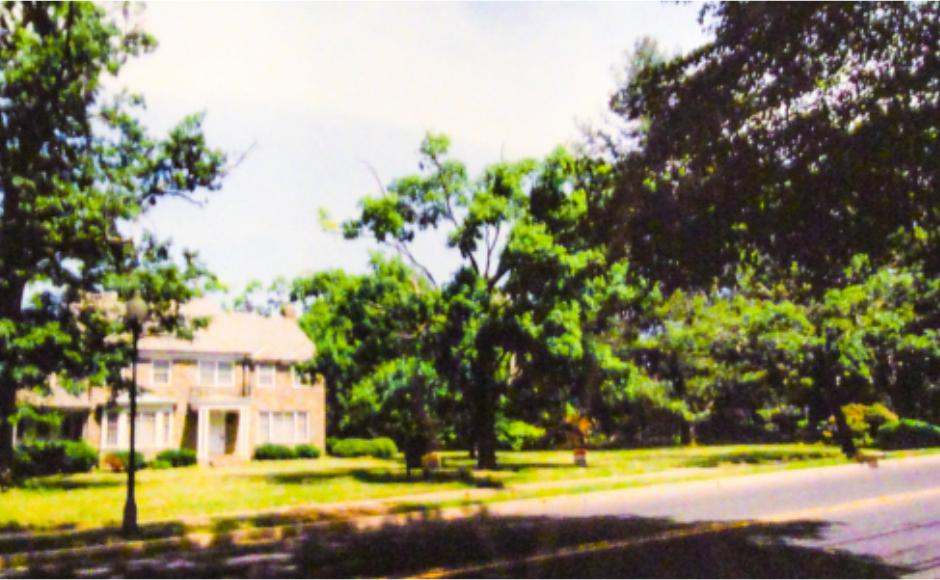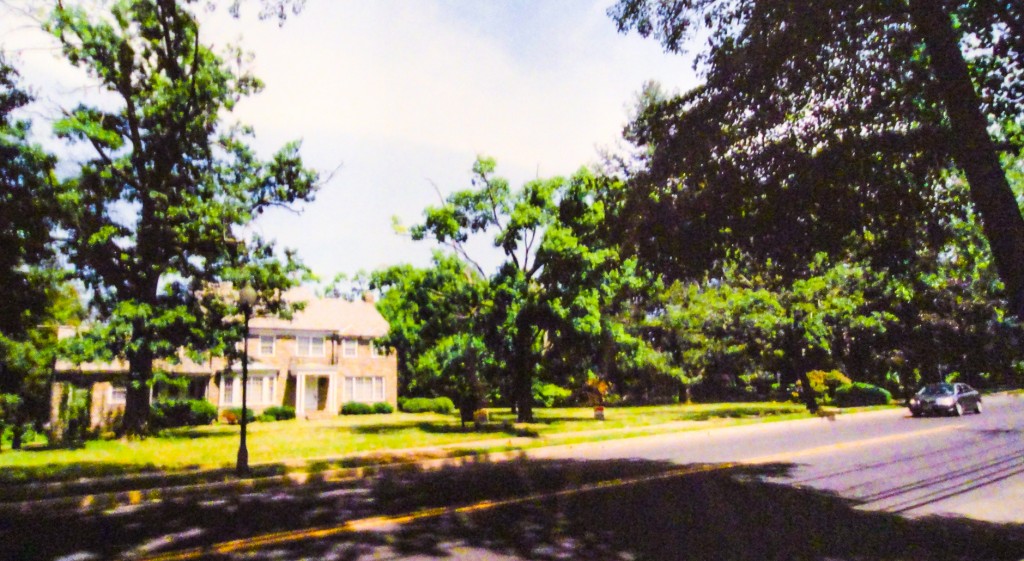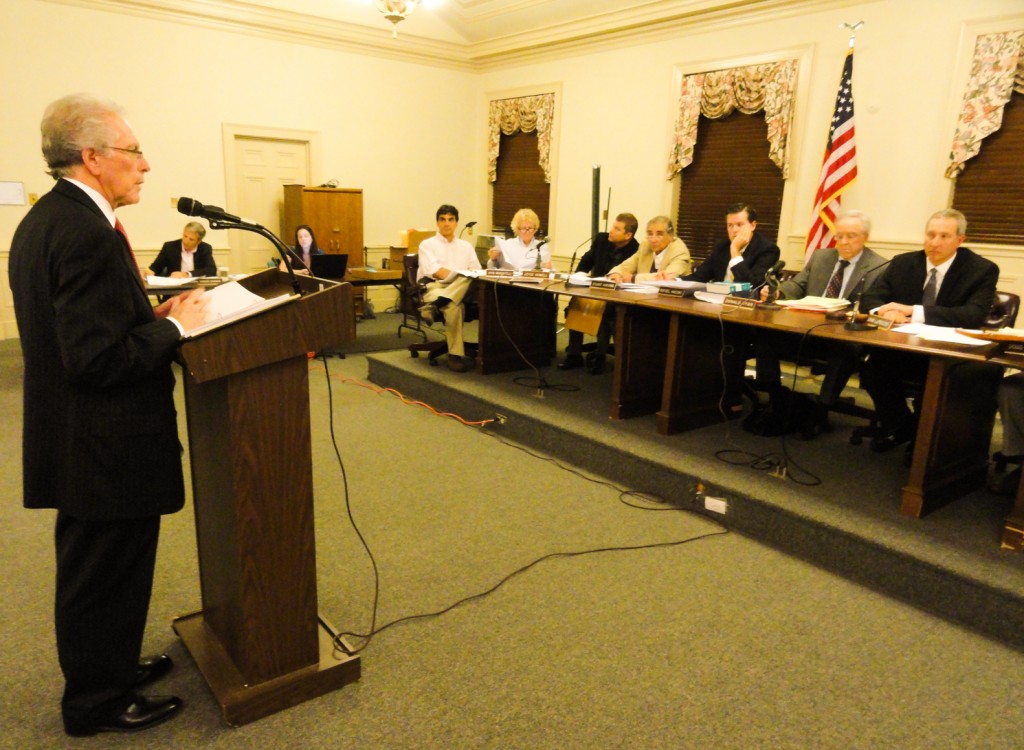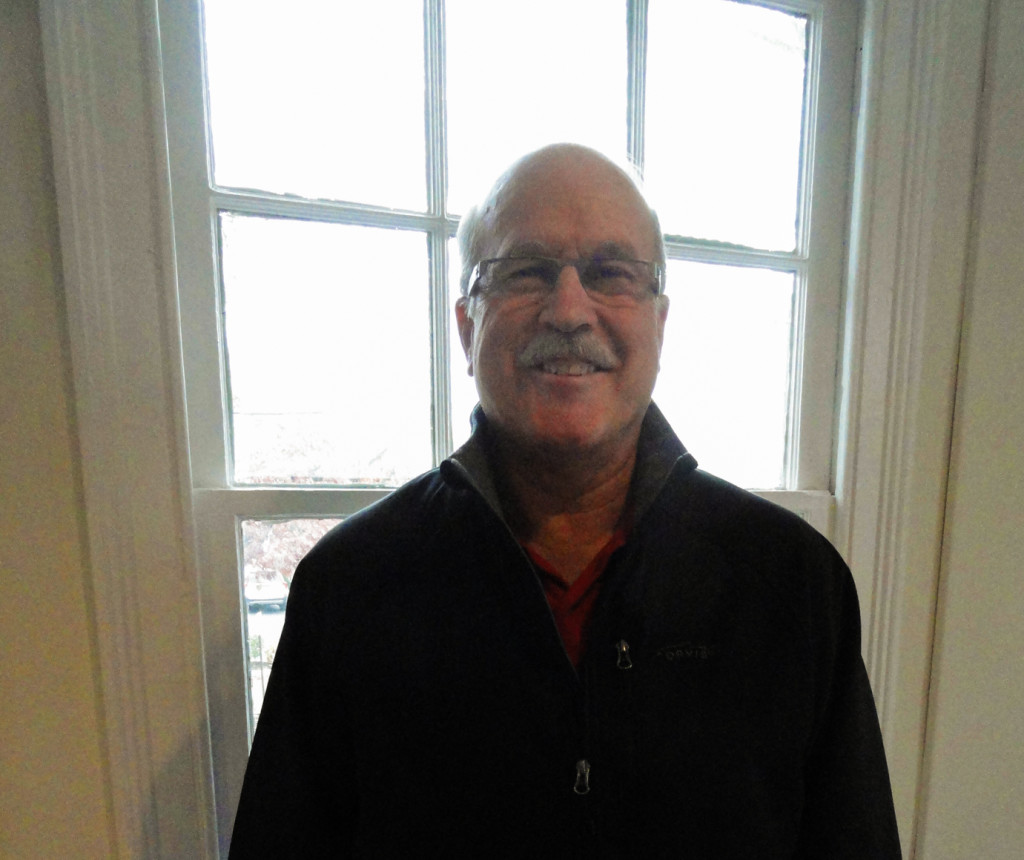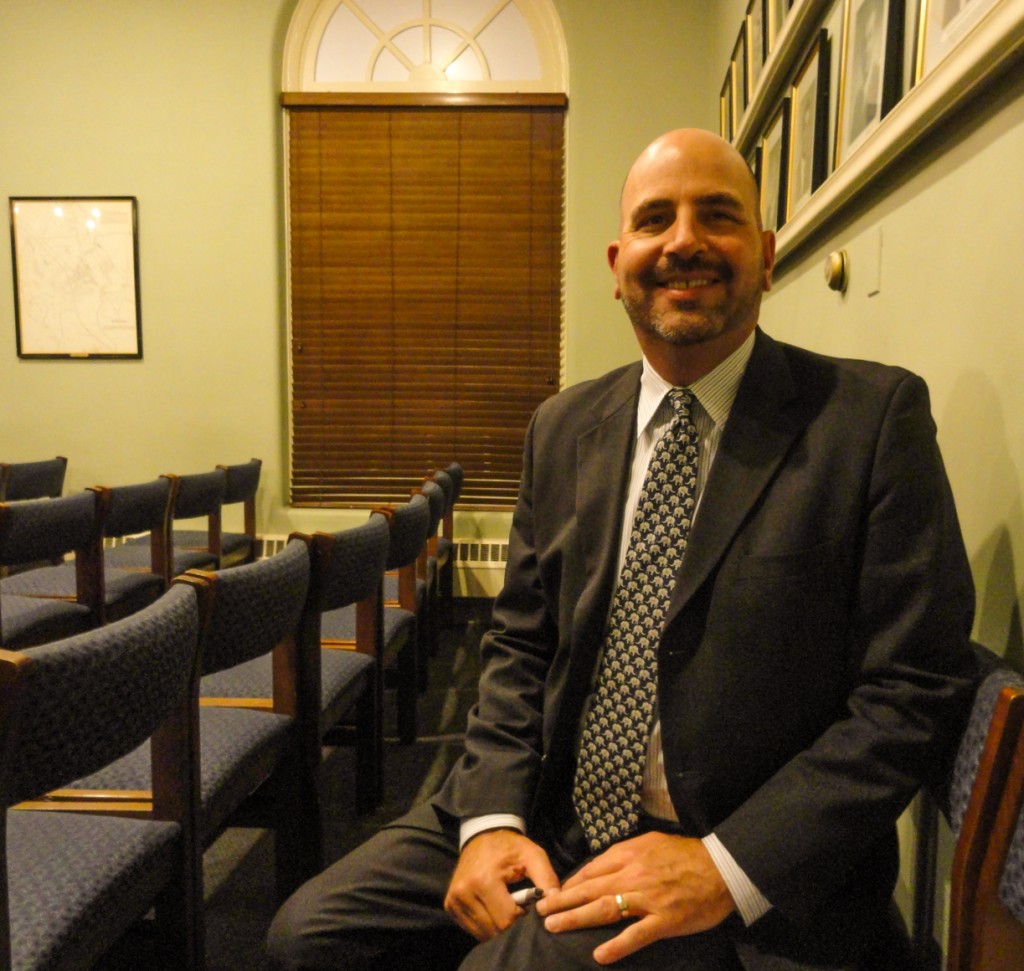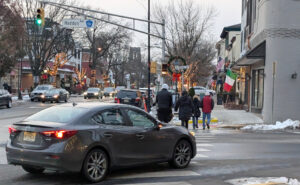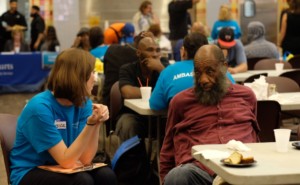Civic groups said the decision affirms their objections to the case, while the attorney for builder Mark DeFeo believes the law will uphold his application on appeal.
By Matt Skoufalos
Since the beginning, everything about builder Mark DeFeo’s proposal for the subdivision of 605 Warwick Road in Haddonfield has been outsized, from the 1.2-acre, corner lot itself to the public outcry in opposition of its being carved up.
At the end of months of deliberation, which were punctuated by three- and four-hour monthly planning board meetings and additional special sessions, the borough finally rejected DeFeo’s application by an 8-1 vote on December 2.
The lone dissenter was board vice-chair Douglas McCollister, whose “yea” vote came after the decision had already been marked as a foregone conclusion.
The meetings produced technical discussions about engineering concerns on the lot, hand-wringing about the cultural impact of subdividing a “gateway” property in town, and arguments about local land use law.
But the biggest throughline of all that discussion was that organized neighbors in a small, historic community can still raise their voices to significant effect, even when clashing against personal property rights and local precedent.
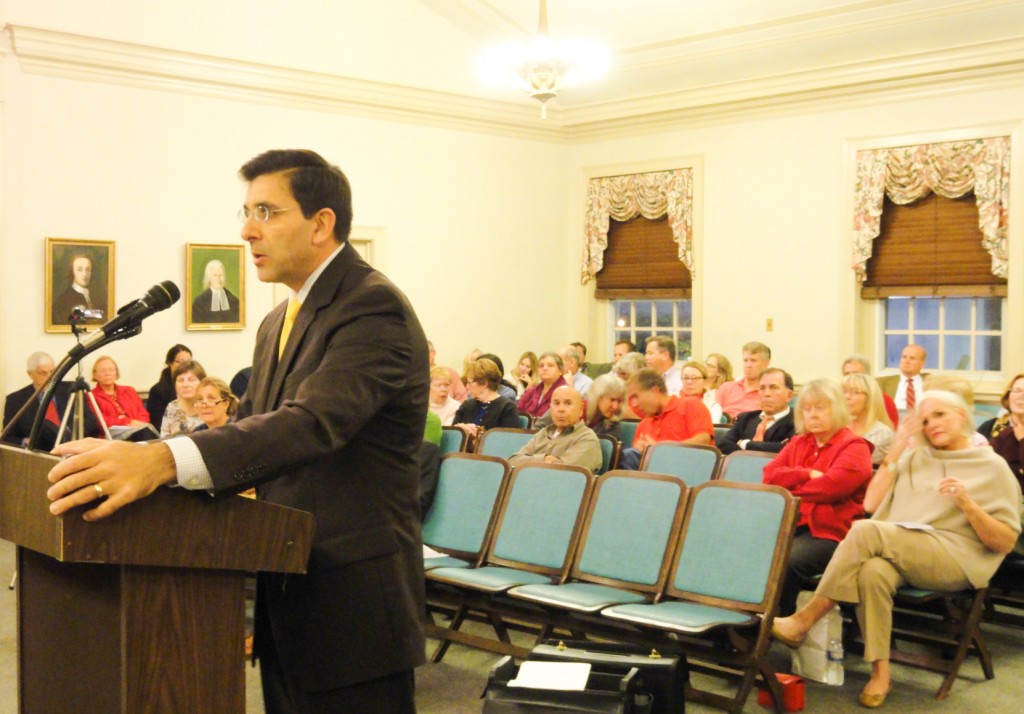
Salvatore Siciliano, attorney for opponents of the Warwick Rd. subdivision, addresses the Haddonfield planning board. Credit: Matt Skoufalos.
‘Reasonable remedies’
Attorney Salvatore Siciliano, who argued on behalf of Concerned Residents of Haddonfield, a neighborhood group that opposed the plans for 605 Warwick, called the vote “a resounding victory.”
“In my estimation, the system worked here,” he said.
“You have engineers and planners who theorized what would happen in terms of development in Haddonfield. That’s the reason the board exists, to marry the reason to the fact, and they saw in this instance, it worked.”
After hours of testimony, Siciliano said he believed the governing body ultimately still perceived too many unresolved issues with the project to move it forward.
“This started in April, and after nine months of asking questions, they were still asking questions,” he said. “The builder knows full well once that subdivision is granted, he’s never coming before that board again.”
Stormwater management, including the condition or presence of underground basins used to collect it and the calculation of how much runoff the property accumulates, was a key point of contention. So was the situation of driveways on the proposed lots, which would sit on an uncontrolled intersection.
None of these makes the project unsalvageable, Siciliano said; he believes the former could be resolved by gathering better data on the stormwater calculations on the property, and the latter by conducting a traffic study at Warwick and Gill Roads.
“There are reasonable ways to remedy those concerns,” he said. “Why they haven’t done [so] is because when they engineer the entire project and show where the houses are and the size of the houses, then they’re going to need variances,” Siciliano said.
“You cannot create a hardship on the board and then say, ‘I need a relief from your variances to construct a home.’”
Finally, for all the uproar about 605 Warwick, Siciliano pointed out that the passage of another subdivision project, at 645 Washington Avenue, was heard and approved at the December session without fanfare.
“The group of objectors I represent, they’re not against all subdivisions in Haddonfield,” he said. “When you have a project that is fully planned, fully explained, fully developed, then it should be approved.”
To appeal or to re-apply
Once the decision of the planning board is memorialized by resolution, likely at its next meeting, DeFeo will have 45 days to file a Superior Court appeal–which his attorney, Donald Cofsky, says is the next step rather than submitting a revised application for the site.
“Do I think we were entitled [to an approval]?” Cofsky said. “Absolutely. Will we be filing an appeal? Absolutely.
“When you have 100 people show up in opposition to something, even if you have every legal right to it, the majority of boards will say no,” he said.
“Many boards would rather have a judge reverse them then say, ‘You got it wrong,’ and take the heat from their neighbors.”
Cofsky said that “the psychology” of the decision did not surprise him, and credited “passionate” Haddonfield neighbors with applying consistent pressure in defense of their position. He also said that the public groundswell meant he wouldn’t trust the future of the case to the board on a secondary application.
“If I come in with a completely redone plan, are they going to approve it then?” Cofsky said.
“If they’ve got 100 neighbors, am I going to take that chance?” he said. “If the borough engineer says, ‘You met all the standards for runoff and drainage,’ and the board says, ‘I don’t know about that,’ I have to appeal.”
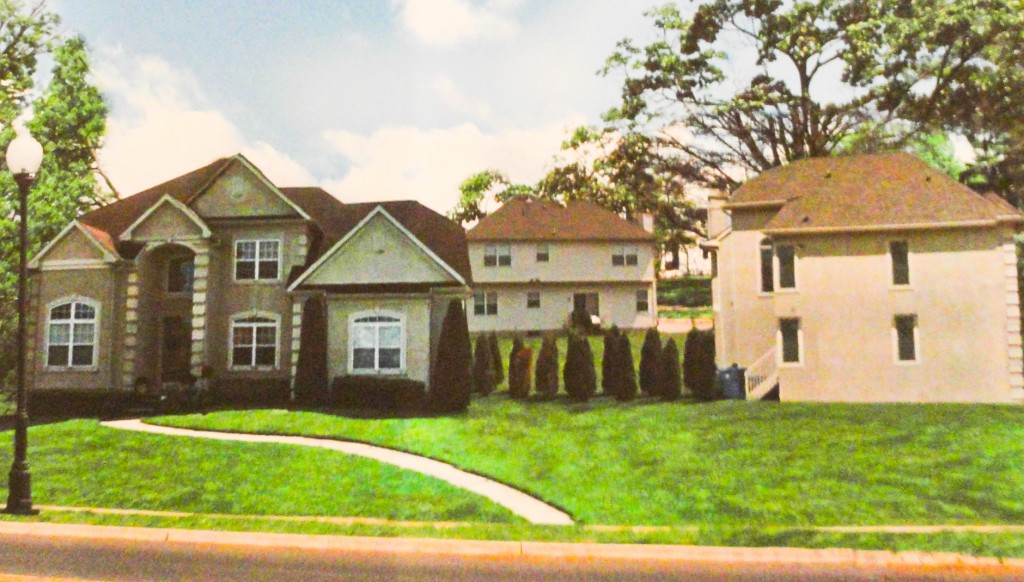
Artist’s rendering of the impact of a proposed subdivision of 605 Warwick Road. Credit: Concerned Residents of Haddonfield.
Cofsky maintained that DeFeo’s request is a “by-right” subdivision, meaning that the application meets the requirements of existing statutes in the borough as submitted.
He added that his arguments left the door open at multiple points in the case to allow the board “the opportunity to have [the application] reworked to their satisfaction,” particularly on the questions of drainage and stormwater management.
“We even agreed that the board, at the very end, before they voted, could look at this as a preliminary [approval], which would give the board continued jurisdiction over these issues,” Cofsky said.
As a by-right subdivision, Cofsky contends, the dimensions, placement, or other details about the home(s) to be constructed are “irrelevant.” As zoned, lots in the Warwick Road district require a minimum of 9,600 square-feet of space; the lots DeFeo proposed on his application are sized at 14,000, 17,000, and 19,000 square-feet.
“Subdivision deals with the size of lots, the percent of lot coverage, and the dimensions,” he said. “We have no idea what the people who want houses built there are going to look like yet [and] there is absolutely no requirement.”
Furthermore, he was unmoved by opposition arguments that DeFeo’s proposal would insufficiently manage stormwater on the property.
“Right now the runoff and drainage on that site is terrible, and anything we do will be an improvement,” Cofsky said.
Cofsky and Siciliano agreed, however, that subdivisions aren’t necessarily anathema to Haddonfield residents. Both Siciliano, who said he argued the months-long case for a flat, one-time fee, and Cofsky reside near the Warwick Road property. Both also praised the planning board, which is composed of unpaid volunteers, for taking on a difficult and public job.
“These are my neighbors too,” Cofsky said. “If I thought this was some horrible thing for Haddonfield, I wouldn’t have accepted the case.”
A question of inappropriate development
Haddonfield resident Jon Simonson, one of the organizers of Concerned Residents of Haddonfield, said that the public groundswell around the Warwick Road property really centered on what he defined as “inappropriate development” throughout the borough.
“Even Mr. Cofsky made that statement in his closing statement,” Simonson said, “that the amount of public outcry and support wasn’t so much directed at this particular subdivision as it is on the other side of town, where there’s smaller properties and much larger homes are being squeezed on.”
Local ordinances that define the limits of impervious coverage force builders to push their designs up instead of out, Simonson said, which makes for “McMansions” that don’t fit with the character of the neighborhoods.
But a second, unintended consequence of these ordinances is the number of dry well stormwater retention systems appearing in town; a concession to the coverage area statutes.
“More and more of these retention, dry-well-type systems are going in, and yet there is absolutely no methodology, ordinance, anything in town that indicates who’s responsible for those dry well systems, and no method for enforcing them to make sure that they’re maintained,” Simonson said.
Much more heralded than the stormwater issues in the 605 Warwick case, however, were the character-of-the-neighborhood arguments. Simonson pointed out that the property is considered a “gateway” to town in the Haddonfield master planning documents, and that “preserving the visual attractiveness” of such homes is meant as a critical guideline in any zoning decisions regarding them.
In that respect, Simonson said, the grassroots opposition to DeFeo’s application demonstrated that Haddonfield neighbors are interested in a participatory democracy around the redevelopment of the town.
“This can evolve into something larger, and it has already, I believe,” Simonson said. “The commissioners have created a four-person committee to review all of our ordinances associated with the planning board and the zoning board.
“I do think we’ll effect change,” he said. “It’s a hard thing. There are personal property rights; there’s always a need to assess and re-examine. It’s been almost 12 years [since that has been done] now, and why not?
“We are certainly hoping that this is a springboard to move forward and be part of this committee,” Simonson said.
‘Finding a balance’
Haddonfield Mayor Jeffrey Kasko agreed with Simonson’s assessment as well.
Kasko said that the case has led borough government to look into its own pipeline for applications such as DeFeo’s, which he said was subject to “oversights that we’ve already looked into.”
The borough had taken flak from Concerned Residents for a handful of issues around DeFeo’s application, including its being passed on to the planning board for review despite the property not being current with its taxes.
Acknowledging that such procedural errors are already being corrected, Kasko countered that DeFeo has held all permits necessary for the demolition of the building but waited to tear it down, at the mayor’s behest, until the planning board completed its review.
“He wanted to take it down because he didn’t want to get that fourth-quarter tax bill,” Kasko said. “I checked with the tax assessor and the tax collector and they said, ‘We can prorate it.’
“We would do that with anyone, ” he said. “If the house on your property increases your taxes by six grand and then you take the house down, you can get a credit.”
The case is leading borough officials to take a deeper dive into its zoning ordinances “to see if we need to tweak anything as far as the setbacks on the corner lots and the issue of stormwater drainage,” Kasko said.
The mayor also agreed that the historic preservation issues of the case are nothing to be dismissed, either; however, he emphasized the need to “find a balance between what the community and the neighbors want.
“There’s that tension between preserving something that has always looked a certain way and people who want to make improvements and make something new,” he said. “That’s very subjective. What we can do is make sure that we have ordinances for size and bulk and impervious coverage and stormwater drainage.”
At this point, however, Cofsky said that the fate of the current house at 605 Warwick is already sealed.
“That house that’s there, you go inside it, it’s got a 1950’s kitchen, and 1950’s bathrooms,” he said. “They couldn’t sell it. That house would need $200,000 at least to bring it up to where people would even look at it.”
Cofsky said he expects the home will be torn down within the month.
Get more local news that matters. Check out NJ Pen on Facebook and Twitter.


